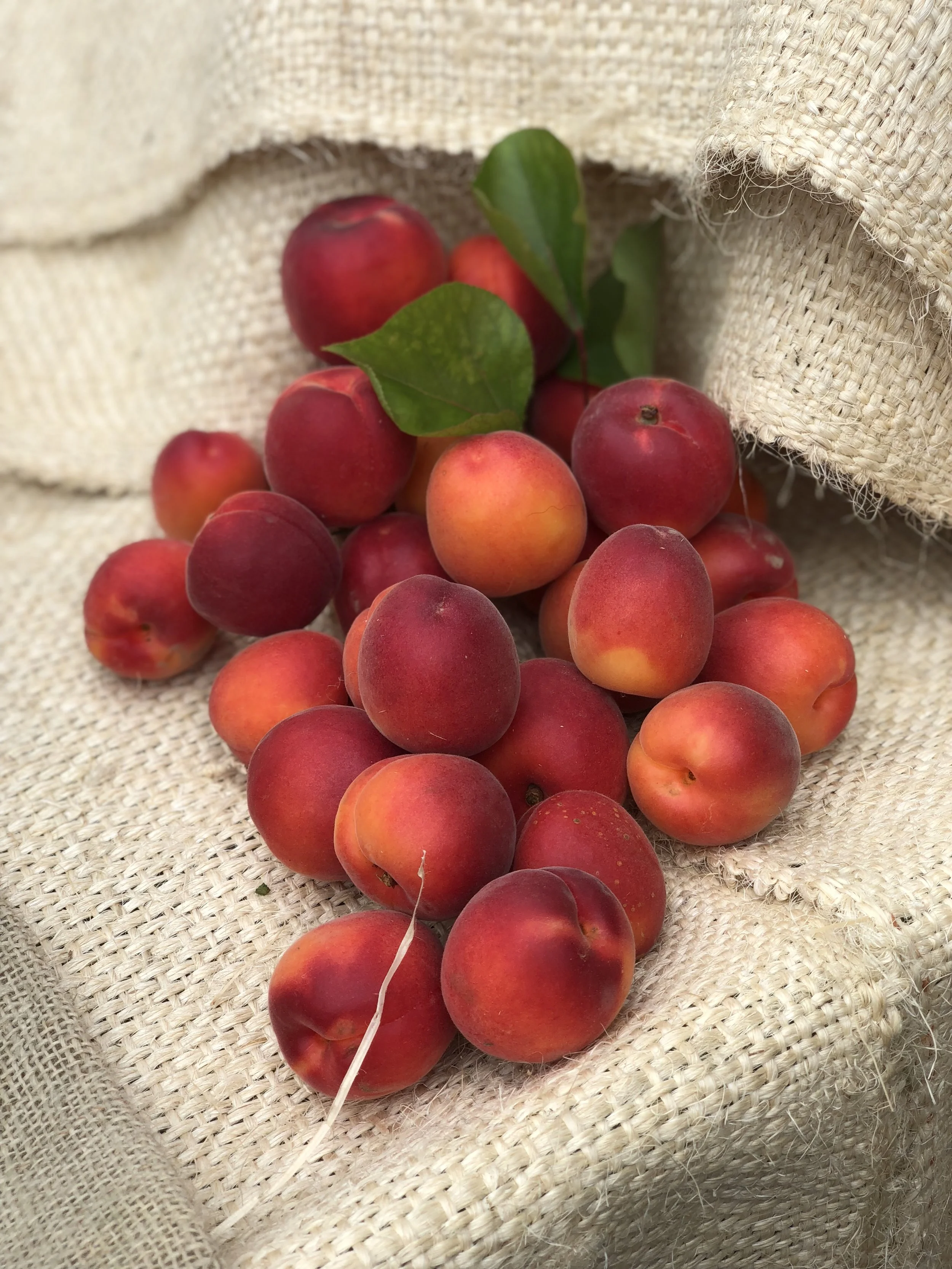Muscat and Uva Fragola Grapes
Photo ©Evie Saffron Strands
Grapes
Being able to buy Grapes all year round can make us take for granted this important food, which is one of our earliest cultivated plants. But the European season is in full swing so there’s no better time to buy them. We can eat the fresh fruits off the vine, make them into wine, dry them to make raisins and currants for storing, and press unripe fruits to make verjus to use instead of vinegar. The grape’s seeds can also be pressed to produce a cooking oil. Their tender young leaves can be used as edible wrappings – think of dishes like dolmades in Greece; warak enab in Lebanon; and yaprak sarma in Turkey. Vine prunings can be tossed onto hot coals to add flavour to grilled food and even the old wood cut-backs make good firewood. No wonder we were quick to recognise the value of the grapevine.
Muscat grape
Photo © Puntarelle&Co
There are thousands of grape varieties, most of the word’s crop - around 2/3 - goes to make wine, the other third being eaten either fresh or dried to make raisins. Most wine grape varieties are acidic, which helps to control the yeast fermentation, while table grapes come in large clusters and are generally sweeter. Most commercial eating varieties today have been bred to be seedless and to have a long storage life, the commonest being the ubiquitous ‘Thompson Seedless’. Grapes suitable for eating fresh are quite diverse and worth seeking out. Ranging from pale yellow to deep purple, seedy to seedless, their sugar content can range from 14%-25% and their acidity 0.4%-1.2%. And it’s worth remembering that seedy varieties often have the best flavour.
If you want to cook with grapes, here are a few ideas. In wine-growing regions of Italy they make Schiacciata – a focaccia-like bread – where grapes, and sometimes sprigs of rosemary, are spread over the surface before being drizzled with honey or scattered with sugar then baked; you can roast grapes in olive oil in a hot oven for 10 minutes until just bursting and serve with roast meat – particularly good with pork and game; add some to a pan of fried sausages and onions towards the end of cooking; make a Grape sorbet with deep purple Italian Uva Fragola, or Concord, grapes.
Chasselas grape
Photo © Puntarelle&Co
The Spanish make Ajo blanco, or white Gazpacho, a chilled soup which originated in Malaga: well ground almonds are mixed to a soft paste with a little water, briefly soaked white bread and garlic is added before whizzing all together in a food processor. Iced water, or milk, goes in until the consistency is that of single cream. A little salt, pepper and sherry vinegar is added to taste then the soup is chilled for at least and hour. White grapes, preferably spicy Muscat, are added just before serving.
Here at Puntarelle & Co, it’s time to celebrate the European season for grapes. The Italian deep-purple Uva Fragola have arrived. Seedy, with a firm skin, they have a distinct strawberry and exotic fruits flavour, makes perfect Water Kefir by London Fermentary. The thinner-skinned, perfumed Muscat grape is also here. Its gold/green to shell-pink translucent orbs hold spicy, musky flavours. These two are hard to beat but we’ll have other varieties to add to the mix this autumn.
Super Nova pink grape
Photo © Puntarelle&Co











